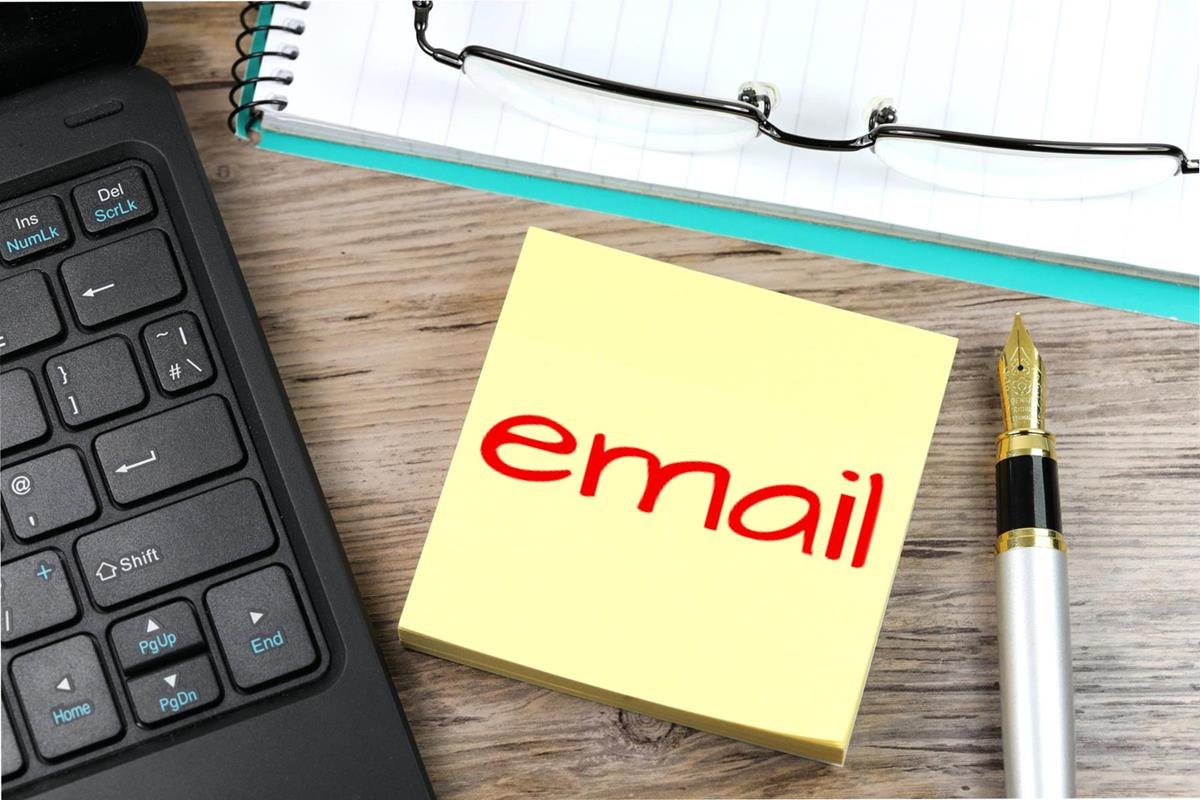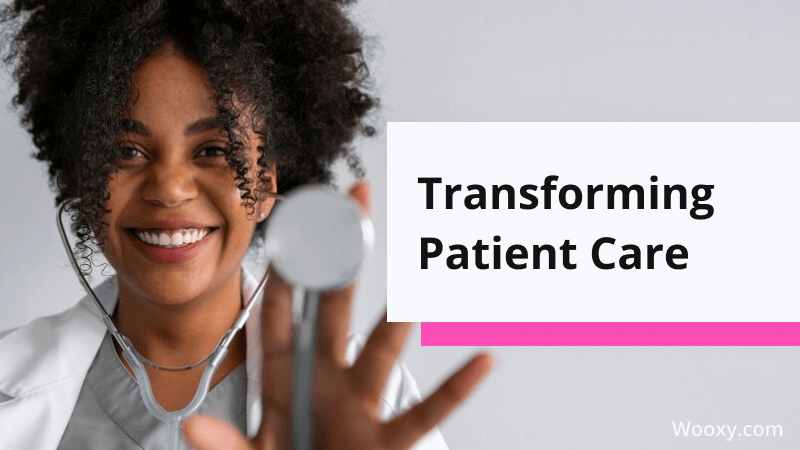Email Marketing Guide For Healthcare
Email marketing is a powerful tool in healthcare. It allows healthcare institutions and service providers to communicate effectively with patients and improve their engagement and education. This promotion helps maintain constant contact with patients, disseminate important information, increase people's health awareness, and improve overall treatment outcomes.
Healthcare email marketing best practices have shown that modern promotion methods allow you to actively collaborate with patients, establish contact, and provide important information promptly. In this review and guide, you will learn how to use email marketing in healthcare to interact with patients and improve service quality most effectively.
By the way, Wooxy is excited to participate in MedMeet 2024 at the Meredian Expo on November 16-17. We'll be showcasing our latest advancements in email marketing automation, specifically designed to enhance patient engagement and streamline communications within the healthcare sector. Join us to see how Wooxy’s tools can make a difference for medical industry!
Why Email Marketing Matters in Healthcare
Email marketing in healthcare is gaining momentum and becoming more relevant. This trend is explained by its ability to improve communication, education, and compliance. Healthcare institutions that use such marketing can establish constant contact with patients, contributing to high engagement and satisfaction levels.
Email marketing can:
create trusting relationships with patients;
educate patients and distribute helpful information;
remind about appointments and follow-up.
All of the above factors affect patients' overall treatment outcomes and health. Therefore, we will consider each point in more detail to understand the benefits hospitals and healthcare institutions receive from email marketing.
Building Trust with Patients
Email marketing has various objectives. One key goal is to build and maintain trust between the healthcare institution and patients. Constant and personalized communication via email helps patients feel more involved and informed.
Personalized emails contain information about the patient’s health condition, treatment, and upcoming visits. This approach helps build trust and improve relationships.
We can highlight the main benefits of building trust through email marketing:
personalized information – you can send emails containing information about the patient’s health, treatment, and recommendations, they help create a sense of individual approach to each person, which evokes a sense of importance and special attention;
regular communication – you can keep in touch with periodic updates and reminders, and clients can receive notifications about important aspects of their health;
accessibility and convenience – patients can access important information at any time convenient for them, this approach makes the understanding between the institution and the person closer and more understanding.
The probability of non-compliance with recommendations or misunderstandings is reduced to zero.
Trusting relationships between a medical institution and patients are significant for both parties. Doctors want to be sure that their appointments are understood and accepted, and the audience needs an individual approach, which email marketing can provide.
Patient Education and Outreach
Email marketing is an effective tool that you can use to educate patients and successfully disseminate medical information. Hospitals and other institutions in this field can use email to send educational materials, information on disease prevention, treatment updates, and lifestyle recommendations.
Modern medicine is a market constantly evolving, and new treatment methods are emerging. Therefore, you can regularly remind patients about yourself, creating a trusting relationship and reminding them that you remember them.
You can use email marketing to educate patients in different ways. Here are some common ways:
newsletters are regular mailings that can contain articles, health tips, and information on new treatment methods;
educational webinars and seminars are invitation-only events that help patients expand their knowledge about health and treatment methods;
you can send prevention recommendations to patients to inform them about various rules for preventing certain diseases, this method can be used to communicate the importance of screenings and vaccinations.
There are many options for educating patients via email, the most common of which are listed above. However, you can create your email scheme to interact with clients.
Appointment Reminders and Follow-up Actions
Email marketing reduces appointment no-shows and improves patient compliance with follow-up care recommendations. This approach helps maintain high patient adherence to the prescribed treatment, which reduces the percentage of insufficiently effective results after completing an entire course of therapy.
You can solve reminder issues with email marketing by doing the following:
automated reminders are emails that indicate the date and time of the patient's next visit and provide recommendations for preparing for the meeting with the doctor;
the following steps after treatment are emails that contain recommended information on care or compliance with specific rules after procedures and treatments;
reminders for follow-up appointments are updates that will be sent to patients' emails, they will contain information about the need for routine examinations and follow-up visits to individual specialists.
Notifications via email are very popular today. This is a convenient format for communicating with clients without spending a lot of time. Setting up automatic notifications or sending emails allows you to stay in touch with your patients without being distracted from your main tasks.
Compliance and Legal Aspects

You must comply with the applicable laws of your country when using various methods and tools to interact with customers. You should carefully understand what can be used and how it is permissible to act to avoid trouble later.
Effective use of email marketing in the medical field requires a detailed study of the following aspects and factors:
understanding HIPAA and email marketing;
knowing best practices for compliance;
having knowledge on how to avoid common legal pitfalls.
Let's consider the above points in more detail. They will help you use this effective tool within the legal framework, avoid violating the law, and achieve the desired results.
Understanding HIPAA and Email Marketing
Compliance with privacy laws is critical for healthcare email marketing. HIPAA requires healthcare organizations to protect patient’s personal information and ensure the confidentiality of their data.
The essential requirements that healthcare organizations must comply with when using email marketing include the following:
privacy – all patient data must be effectively protected and cannot be used without the client’s consent;
encryption – emails that contain sensitive information must be encrypted by third parties;
patient consent – it is necessary to obtain explicit consent from patients to receive marketing emails.
You must comply with the above rules and requirements that HIPAA puts forward for healthcare organizations. This will allow you to successfully use email marketing to promote your services and interact more closely with users.
Best Practices for Compliance
You need to understand HIPAA requirements to comply with them fully. The second important point is to adhere to the protection of patient data. Several best practices will help you solve this issue. They look like this:
use email platforms that offer you features such as data encryption;
make sure you have consent from the patient to receive marketing emails;
always provide users with an easy way to unsubscribe from emails.
Following the above practices can establish a healthy and positive relationship with each patient without violating legal regulations.
Avoiding Common Legal Pitfalls
Various legal issues and nuances can accompany email marketing in an industry such as healthcare. However, such situations can be avoided. Your task is to know and skillfully use the methods to prevent them. Here are some clear examples of such manipulations:
ensure your emails comply with legal requirements to avoid fines and legal consequences;
do not use patient data for purposes for which they did not consent;
always provide an easy way to notify patients that they do not want to receive the newsletter and fulfill their wishes.
It is vital to act within the framework of current legislation. Only in this case can email marketing provide effective healthcare results.
The Importance of List Segmentation
Segmenting an email list is a key aspect of successful healthcare marketing. The process allows healthcare organizations to tailor and personalize messages, increasing their relevance and effectiveness.
There are different criteria for list segmentation. Among the most common are demographic data and medical history.
Based on demographic data, you can sort patients by age since different categories of people may be interested in distinctive services and require other information. You can focus on clients' gender since women and men may be interested in different services and consultations. The third option is location, which affects several viruses and allergic reactions typical for a particular climate.
Segmentation by medical history allows you to tailor content depending on the patient's medical needs. Here, you can pay attention to the person's health condition and start from this when sending letters of a particular nature. You can also take into account the types of treatments. This type of division allows you to send specialized recommendations and instructions.
You can send letters based on recommendations for care after a particular disease, possible side effects, etc. You can segment by customer engagement level. Active users can be encouraged with additional offers, while inactive users can be sent letters as additional reminders.
Segmentation can be done in different ways. Your task is to choose what is best for a particular case and matches your work characteristics.
Maintaining List Hygiene and Accuracy
Regularly updating and cleaning your email list is essential to keeping your data accurate and up-to-date. This will help you avoid sending emails to inactive or invalid addresses and improve the overall results of your campaigns.
There are different ways to maintain list hygiene. Some of the most common and effective approaches include:
regular cleaning — periodically remove inactive or invalid addresses;
data validation — use tools to check the accuracy of addresses;
updating information — regularly update patient data to keep the data up-to-date.
You can use all of the above options to achieve the best effect. These manipulations ensure that your list does not contain invalid numbers and that your mailings bring the most effective results.
Types of Email Campaigns for Healthcare
You can use different types of campaigns for email newsletters. Modern promotion offers many opportunities for developing services for healthcare institutions. Among the most common ones, we can highlight the following:
welcome letters;
appointment reminders;
educational newsletters;
preventive campaigns;
follow-up visits;
patient satisfaction surveys;
health awareness campaigns.
Let's examine the above points in more detail. You will understand how you can effectively use this or that type of campaign to interact as closely as possible with patients, build trusting relationships, and develop the popularity of your services.
Welcome Letters
Welcome letters help establish initial contact with new patients. They create a positive first impression, encourage repeat use, and readily provide all the necessary information.
It is vital to write a welcome letter correctly to look attractive and evoke positive emotions in the subscriber. You can include the following information:
information about the medical institution, available services, and specialists;
a description of what patients can expect from future letters;
useful links to resources and contact information for additional information.
A welcome letter should contain a few details and information. It should generally introduce the person to the institution, available services, and contact information. Large amounts of text irritate people, especially when they have yet to learn how interesting the service will be to them. Too informative letters are usually not read to the end but closed.
Appointment Reminder
Automatic appointment reminders help reduce missed appointments and ensure patients keep them. Such emails communicate that clients are remembered, expected, and welcomed. This approach increases positive user perception.
The main advantages of appointment reminders include the following:
patients do not forget that they have an appointment for a specific date and time, they will not miss it;
clients who receive reminders are more likely to keep appointments, feel a particular responsibility for arriving on time;
the ability to reschedule appointments if necessary.
This way, you can build closer contact with clients, and patients will interact more actively with the medical institution's staff.
Educational Newsletters
Newsletters provide patients with up-to-date information about health, disease prevention, and treatment. Letters in this format help patients stay informed and engaged in their care.
It would be best to write newsletters correctly to make the reader read the information. To do this, the letter should contain the following information:
health tips – recommendations for maintaining health, disease prevention;
medical news – the latest achievements and news in the medical field;
prevention and treatment – information about new methods of combating various diseases and preventive measures.
This content is correct and will interest social genuinely interested in their health.
Preventive Campaigns
Preventive campaigns aim to promote the importance of such activities as vaccinations, screenings, and routine check-ups. We can distinguish the following types of preventive campaigns:
notifications about the need for vaccinations;
information about screenings and early diagnostic examinations;
reminders about the need for regular medical check-ups.
Such letters will be helpful for current medical institution clients. They indicate that you remember your clients and their health. Such an approach creates a positive atmosphere and increases the desire to use the services.
Follow-Up Visits
Keeping in touch with patients after an appointment or procedure is essential. You can check on their progress and provide additional care instructions. Based on these features, you can create a mailing list.
You can clarify the patient's condition after the procedure or treatment, provide additional care instructions, and recommend further treatment. Additionally, the letter can indicate the need for extra visits to the specialist to inspect the progress and course of therapy on the spot and possibly adjust the treatment plan.
Patient Satisfaction Surveys
You can send out questionnaire letters to your patients. This way, you can collect data and impressions of the services provided. Feedback helps improve the quality of work of the entire institution and individual specialists.
Questionnaires are used for various purposes. Among the most common are the following:
feedback collection — you get patients' impressions of the quality of service and experience of interaction with individual specialists;
data analysis — use the collected data to determine the presence of shortcomings or the need for improvement and adjustment of the service;
feedback — notifying patients about how their feedback helped improve the hospital's service.
Questionnaire letters are an opportunity to receive valuable information from current patients who have used the service. Clients feel important because their opinions are wanted and listened to.
Health Awareness Campaigns
Email marketing can raise awareness of specific health issues or national health events. Each healthcare organization can develop a campaign and send a mailing to existing contacts.
You can develop national line events and inform your patients about them. You can also inform clients about planned health days and invite them to attend the events. You can also create campaigns focusing on specific health issues like cancer or diabetes.
The Importance of Personalization in Healthcare Emails
Personalized emails help improve patient engagement. They are designed to consider the client's individual needs and preferences.
Personalized emails will help establish closer contact with users and build more trusting relationships. The main benefits of such emails include:
increased relevance – emails are tailored to the patient's needs, increasing their likelihood of being read;
increased engagement – personalized emails promote more significant interaction and response;
improved relationships – an individual approach helps build trust between patients and the healthcare institution.
Thus, personalized emails help achieve maximum consensus between the party that provides services and those who use them.
Using Data to Personalize Content
You can use patient data to create relevant content. This may involve medical history, previous specialist visits, questionnaires, etc.
There are different methods of personalization. Among the most common are:
health data analysis;
interaction history;
personalized recommendations.
The above aspects will help create relevant letters and thus attract maximum patient attention.
Interactive and Engaging Email Content
Interactive content helps to increase patient engagement. You can use quizzes, video content, and other interactive elements to create the most exciting and valuable email.
There are many ideas for interactive emails. You can offer clients tests and quizzes that will help assess their health knowledge. Video content that form contains health tips is considered a good option. You can also provide tools for self-diagnosis or treatment planning.
Developing Effective Medical Emails

You can send emails regularly for a long time and still need to get the desired results. To achieve your goals, you must understand what an effective medical email should look like to grab the reader's attention and generate additional interest.
You need to understand the following:
critical elements of effective design;
mobile-friendly markets;
the role of visual elements, media, and graphics.
The above aspects will help you create a bright and attractive email to collect the maximum number of responses. Only in this case will email marketing encourage doctors to perform their functions fully.
Сritical Elements of Effective Email Design
Email design should look professional and match the medical institution's brand. Readability and accessibility are essential aspects.
Favor simple but attractive design. Create a clear structure so that health users can easily read headings and paragraphs. Avoid overly complex fonts that will raise additional questions or difficulties in reading.
Mobile-Friendly Layouts
Smartphones today have many functions, and, as practice shows, most people use phones to check mail, place orders, and search for information. Therefore, ensure that the letter is easily read on small touch screens.
You can use website mobile markets, which automatically adapt letters to the screen size. Make buttons and links large enough for easy tapping. Avoid using large images, as they increase the loading time, which can irritate readers.
Using Visual Elements and Graphics
Visual elements help simplify the perception of complex medical information and make the letter more attractive. You can use:
infographics;
diagrams;
images.
Such visual diversity makes the letter more attractive and exciting. Patients will not get tired of channel reading monotonous text but can be distracted by the visual component.
Automate Your Email Marketing
The automation process helps save time and ensure consistent interaction with patients. Thus, you can be reminded about appointments and follow-up visits and send recommendations or congratulations.
Setting up automation allows you to actively promote your services while spending minimal personal time on such processes. You can simultaneously deal with other issues and know that sending letters occurs without a hitch.
Analyze and Optimize Your Email Campaigns
It is essential to create specific campaigns for your clients and analyze their effectiveness. This will give you data on the relevance of the product and the level of patient engagement.
You should monitor critical metrics. These include:
opening;
click-through rate;
engagement;
conversion.
You can constantly use A/B testing to improve the effectiveness of email campaigns. You can test the letter's subject, content, and design elements.
Collect and analyze patient feedback. This way, you can improve your email marketing strategy. You can analyze feedback from regular surveys and improve based on the collected information.
Conclusion
Email marketing is a powerful tool for improving patient engagement in healthcare. You can maintain communication and strengthen education, engagement, and compliance.
Ensure regular requests and consistent communication with patients. Consider data protection legislation, regularly analyze results, and improve your campaigns.




